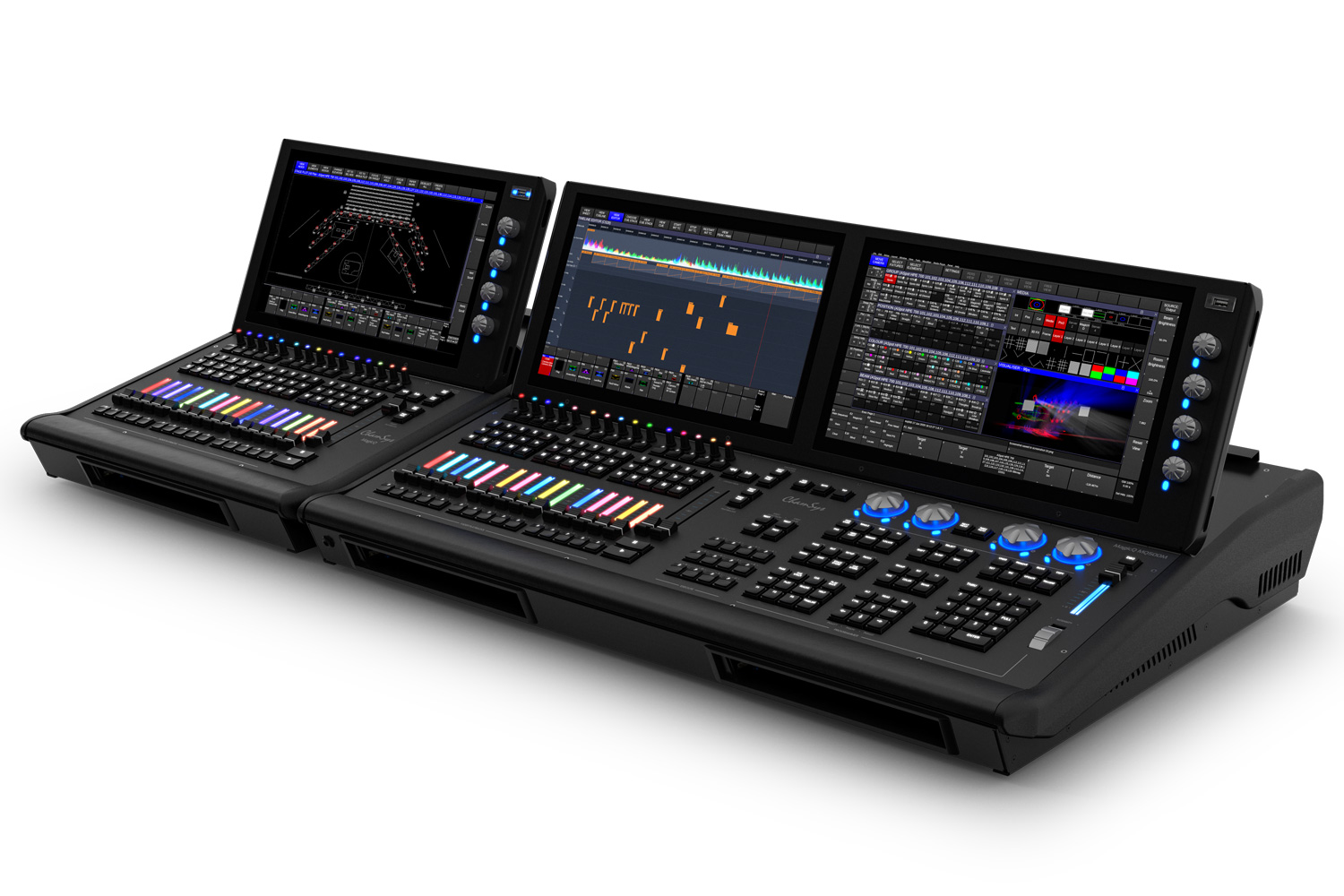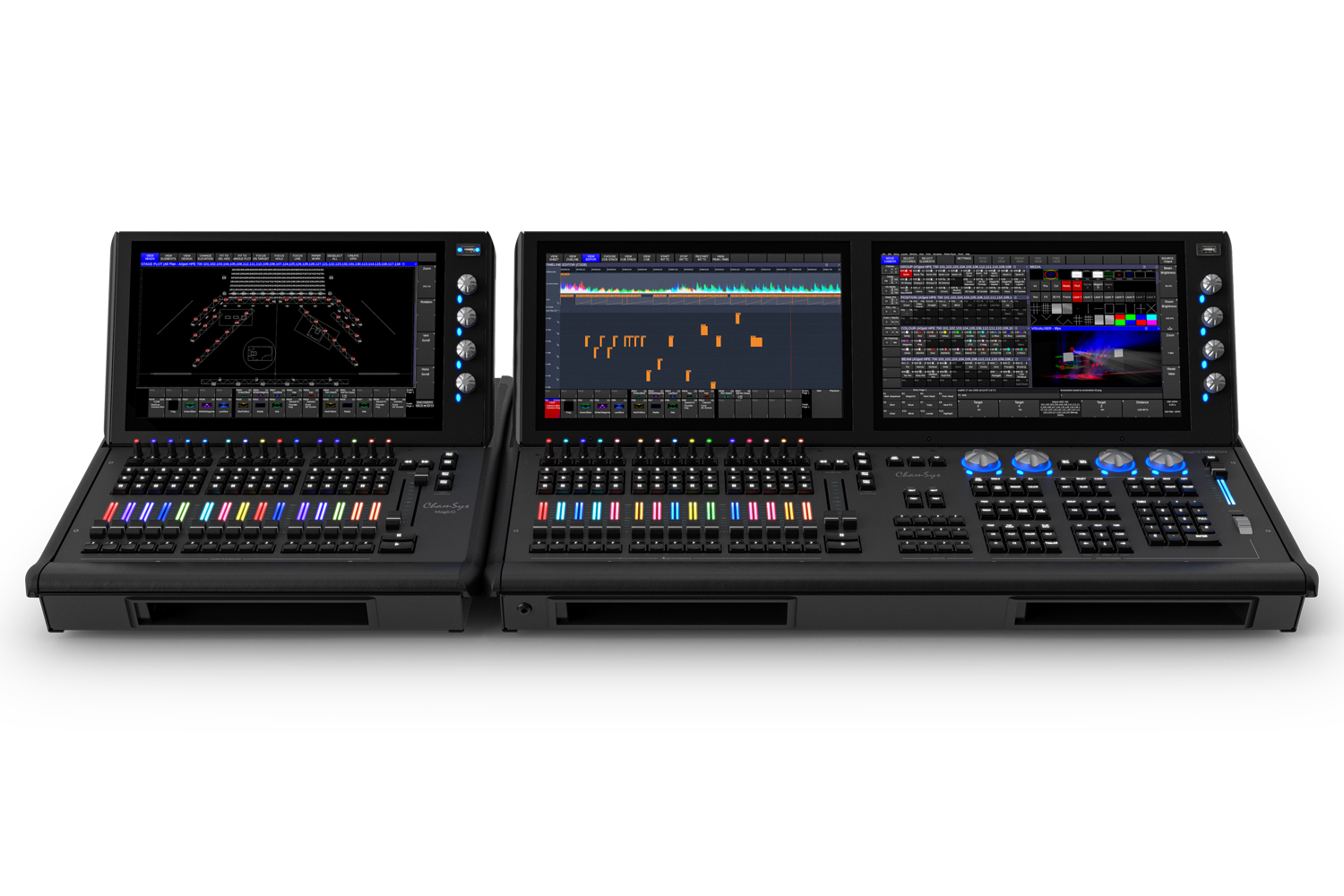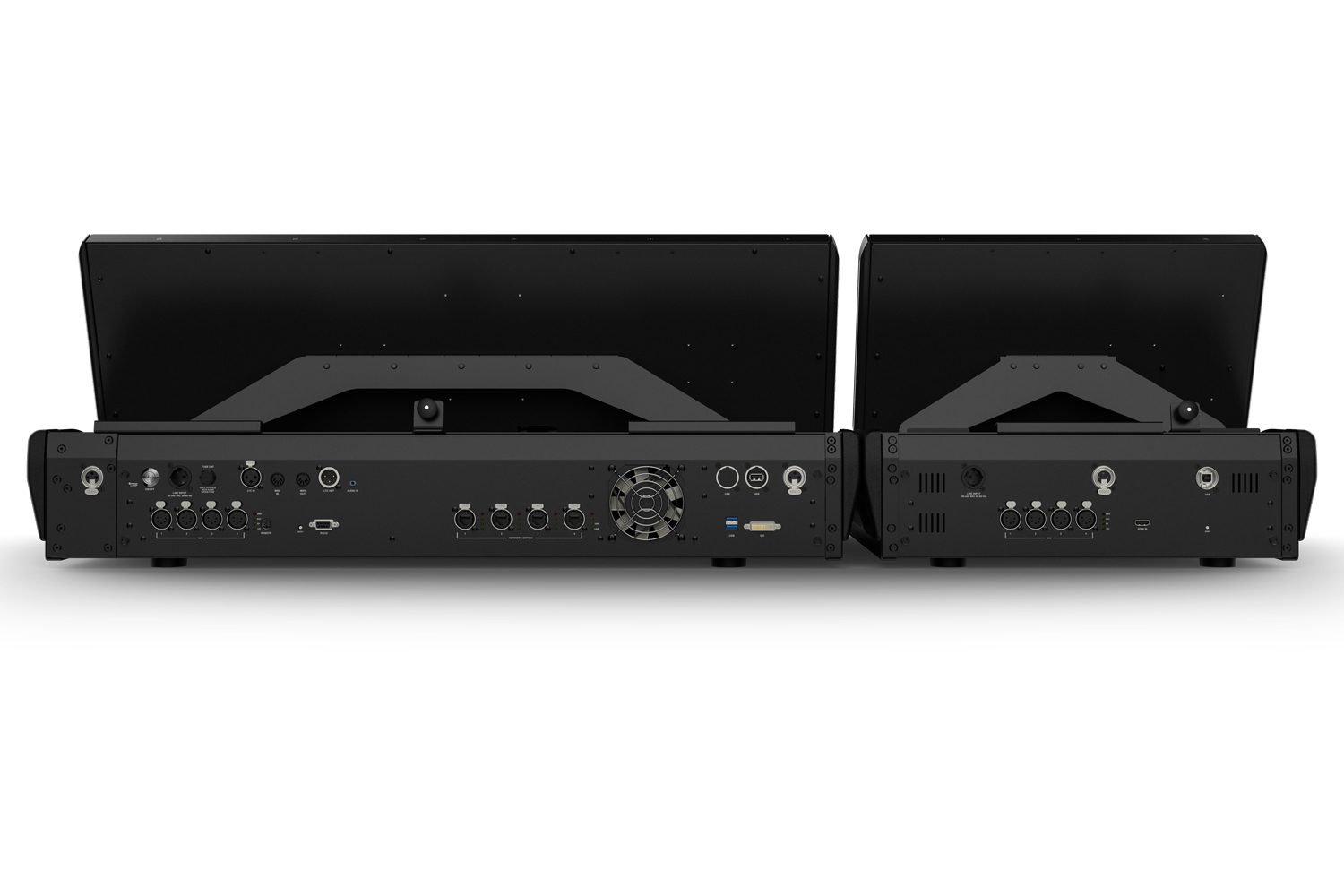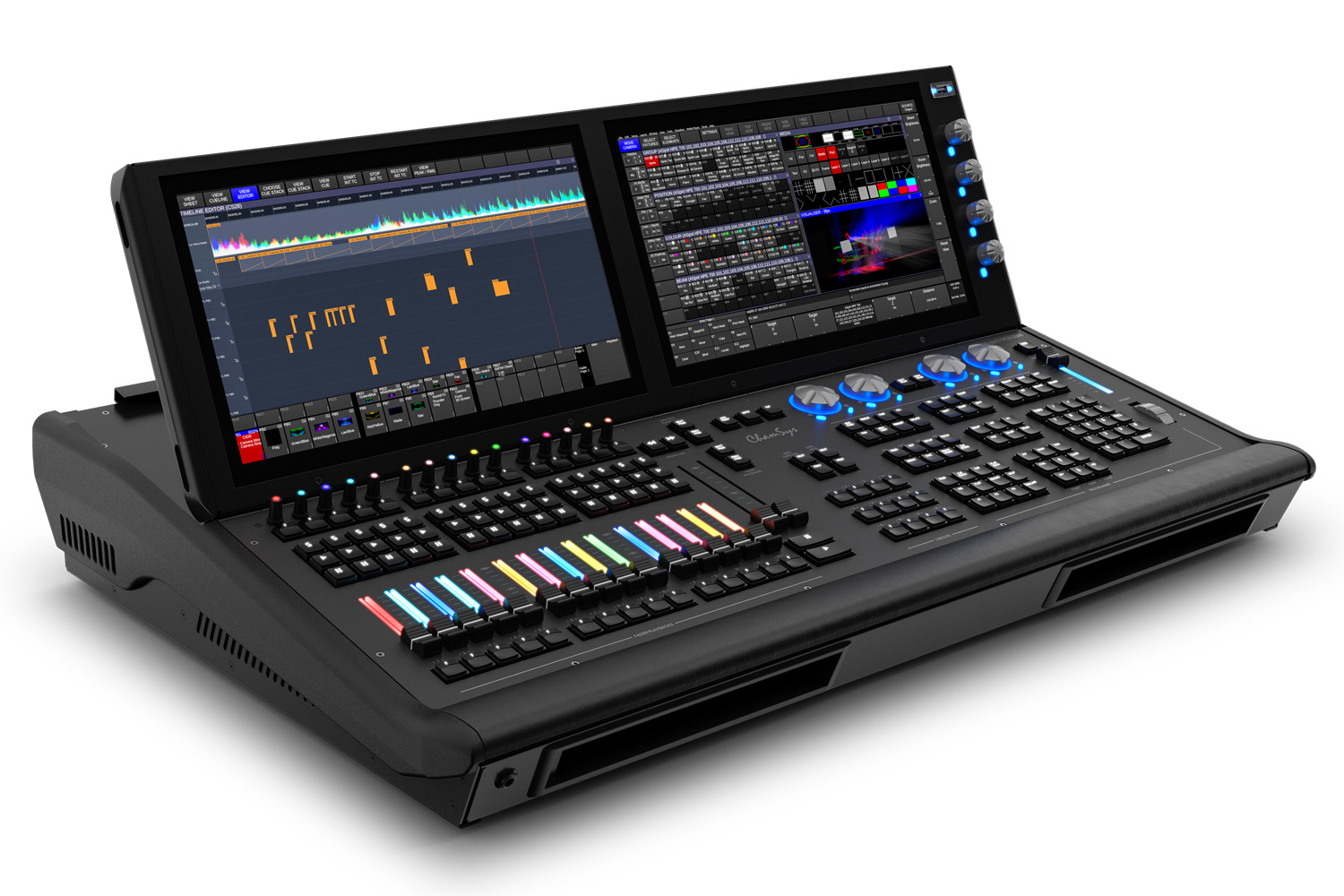Chamsys MagicQ MQ500M Stadium Review
First published in CX Magazine December 2020
View Article Here
I’ve been very faithful to ChamSys consoles since I came across them in my early career. I first used one when working for a production company, and it was instantly the easiest lighting console I’d used to date. All
the stress of programming a show just went away. It was like I was blind and could now see. I’ve toured with other brands, but they all frustrate me in different ways. To some extent, you’re stuck with their methods and can’t customise things to the same depth you can on a ChamSys. I find ChamSys consoles relaxing to use, and they just work.
Simon Horn is a UK based lighting designer and operator, working mainly in live touring. He has designed or programmed and operated for acts including Anastacia, Maribou State, Twinnie, Olly Murs, Westlife, Alison Moyet, The Pouges, Peter Andre, 5ive, B*Witched, Blue, 911, The Honeys, A1, and Liberty X, and for festivals including Cream25, Shiiine On, IOW Festival, Global Gathering, Beautiful Days, Hop Farm, Larmer Tree Festival, End of the Road, and Big Chill.
“I got hold of the full version of the ChamSys MagicQ MQ500M Stadium three months ago. It has instantly made its money back for me”. – Simon Horn – Lighting Design & Operator
Capabilities
I got hold of the full version of the ChamSys MagicQ MQ500M Stadium three months ago. It has instantly made its money back for me as I needed something that could do more than 64 Universes.
I’m currently pushing 80 universes out of my single MagicQ MQ500M Stadium console with no external processing. To my knowledge, the MQ500M is the only stand-alone console that can do that. Another unique feature is that it can also run audio. The show I’m working on now is programmed to sound and all of the show audio is loaded on the console, firing along with the cues. Adding audio is simple; load onto the console’s hard drive, pick an audio file in the cue column, bring up the timeline view to show the full waveform, edit and drag the cue to the right point in the audio, and you’re done. I much prefer that the whole show is on the console without having to use any other external hardware.
Lots of people don’t realise the MQ500M plays back audio, which it can also do from within the MagicQ Stadium software. I’ve even run a show with little audio stings; you can set buttons on the touch screens to fire an audio file, you hit it, and bang, there’s a sting.
I’m currently programing a show that’s quite unique; it’s two steam trains covered in pixel mappable lighting as a Christmas event. There
are around 12,000 addressable LEDs on each train. The lighting is both inside and out, with passengers wearing LED wristbands that light up. The hour-long trip is set to a DJ mix of Christmas songs. The ops position with the MagicQ MQ500M is in middle of train in a guards and luggage area. I’m running software that monitors the train’s GPS location, which in turn triggers lighting cues – it’s mainly to avoid the fact a train is not allowed to flash red, yellow, or green at the signals!
“ChamSys have made a big deal of the fact that the MagicQ MQ500M Stadium has moving faders. Honestly, I never thought I really needed moving faders, but they have blown my mind with what you can do with them.
The Big News Faders
ChamSys have made a big deal of the fact that the MagicQ MQ500M Stadium has moving faders. Honestly, I never thought I really needed moving faders, but they have blown my mind with what you can do with them. For me, the big benefit is quick access to features, including Intensity Masters. If you want to control the brightness of certain fixtures without affecting anything else, you set up the control as an Intensity Master. You’d normally have to assign a dedicated fader to that, and take up a fader space. In the ChamSys operating system, there’s a button that takes you straight to a dedicated Intensity Master page, and instantly shows you all the groups. They’ve really thought about the extra functionality moving faders gives you, and they’re really useful for operating a touring show.
Pixel mapping
Pixel mapping in ChamSys used to be similar to other mapping systems – there’s a grid, and you draw your map in it. But now, because the MagicQ MQ500M Stadium supports importing lighting plots, you can bring in your
map directly from your design software. You can then select your fixtures, hit ‘create pixel map’, and it’s done. I almost cried – I could instantly achieve everything I wanted to. I don’t know of any other console that does that.
Physical
I feel the MQ500M is more ‘grown up’ than its predecessors. Every touch and press is more solid. The Illuminated keys are brilliant – it’s easy to find where you are even without desk lamps. Your last button pressed turns red
and everything else remains white. The touch screens do what they should, with multitouch, and a clear and solid look. I used to have to type with one finger, now everything’s more natural, including dragging and dropping,
which has made life easier. The ergonomics, design, and build quality have all improved. The ergonomics are important to me, as I am recovering from a back injury; I struggle leaning over consoles. The MQ500M is just right; everything is where you want it to be, because in the design phase, they’ve asked operators who are actually using it.
Connectivity and Operability
In terms of connectivity, it’s all there. There’s four Ethernet ports, which is plenty, four DMX, USB, audio I/O, LTC and MIDI ins and outs. On the latest version of the MagicQ Stadium software, you can do virtual management of each port. At the top of the playback faders, there are 15 encoder knobs that are configurable. That means you can have another 15 playbacks, speed masters, or side masters. On your layout, the RGB illumination means every fader can be backlit with a different colour. The Execute Page gives you virtual buttons. You can customise images on the buttons, with the ability to set different images for the ‘active’ and ‘inactive’ states. I’ve mapped images of railway signals onto them for our Christmas train show to let the operator know where we are. Fun!
Libraries
The Fixture Libraries are all there. If you’re touring in China or come up against some unique fixtures, you can make a phone call to ChamSys, whose support is second to none, or you can find something similar enough and edit it easily. There’s a very helpful search utility in the console that can search the library for fixtures that are similar.
Scene and Cue Management
The scene and cue management on ChamSys consoles makes busking a show very easy. If you’ve got a certain set of fixtures that you’ve used on another show, you can go into that show file, select those fixtures, and export
the settings into the current show file. You can grab any of the bits you want from other shows; colour palettes, for example. I’ve not started a show from scratch for a decade! Show file management is also easy. Just plug in a laptop, and you have instant access to the console’s hard drive. You can grab show files, of course, and even individual audio files. Being able to use a computer for show file management is great. For example, my current show file is 400MB, excluding media content, so that’s much easier to deal with on a laptop than a USB stick.
Product Info:
chamsyslighting.com/products/mq500m
ChamSys MagicQ MQ500M Stadium – The Specs
• 256 universes direct from the console
• 15 fully motorised fader playbacks
• 15 encoder playbacks with RGB indicators
• 12 multi-purpose Macro/Executes/ Playbacks keys
• RGB illumination of playbacks
• Backlit buttons
• Dual Inbuilt 15” Multi HD touch displays
• Up to eight touch displays support (fivevia remote network)
• Dual motorised 100mm crossfaders, ideal for theatre
• Inbuilt MagicVis Visualiser with full rendering of beams and gobos







